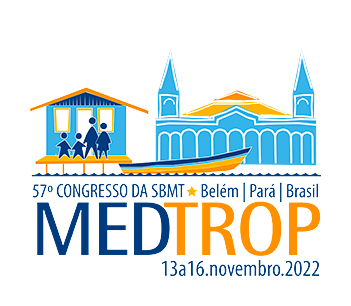Dados do Trabalho
Título
Phylogeography and transmission of M. tuberculosis spanning prisons and surrounding communities in Paraguay: a genomic epidemiology study
Introdução
Recent increases in tuberculosis (TB) incidence in Paraguay highlight the urgency of identifying targeted strategies to interrupt transmission and prevent new infections. While genomic epidemiology approaches have increasingly been harnessed to characterize transmission and guide public health interventions elsewhere, they have not yet been applied in Paraguay.
Objetivo(s)
To characterize M. tuberculosis phylogenetic and geographic structure and recent transmission dynamics in Paraguay.
Material e Métodos
We conducted prospective genomic surveillance inside and outside prisons in the districts of Central, Capital, and Alto Paraná, Paraguay, from 2016 to 2021. We investigated phylogenetic structure and inferred patterns of historic migration and population size changes with ancestral state reconstruction and coalescent-based Bayesian phylogeographic analysis.
Resultados e Conclusão
M. tuberculosis sampled from Paraguay fell within lineage 4, predominantly in the LAM (42.5%; 200/471), Haarlem (38.2%; 180/471), and S (12.3%; 58/471) clades. The majority (86%; 405/471) were pan-susceptible; 8.5% (10/471) had a genomic evidence of isoniazid resistance, and 0.4% (2/471) were multi-drug resistant. We reconstructed the emergence of a mutation in alkyl hydroperoxidase (ahpC), previously considered a compensatory mutation for isoniazid-resistant isolates, in a monophyletic clade of 56 otherwise susceptible isolates. Isolates from individuals diagnosed within prisons and the community were interspersed within a maximum likelihood phylogeny and isolates from individuals incarcerated at the time of TB diagnosis had a higher time-scaled haplotype density (median: 0.49, IQR: 0.22-0.70), a measure of epidemiological fitness, than did isolates from never incarcerated individuals (median: 0.25, IQR: -0.62-0.64; p<0.001). We found a signal of frequent migration between Asunción and Ciudad del Este, the largest cities in Paraguay and a gradual increase in the effective population size of M. tuberculosis for the two largest genomic clusters.
Together, our findings of transmission linkages spanning prisons and the community indicates TB control programs should prioritize reducing transmission risk within prisons, where incidence was 70 times that outside prisons in 2021. While rates of drug resistance were relatively low, research is needed on the phenotypic consequences of ahpC mutations to determine if this mutation is predictive of isoniazid-resistance acquisition.
Palavras-chave
tuberculosis, genomics, transmission, prisons, Paraguay
Área
Eixo 13 | Tuberculose e outras micobactérias
Categoria
(Concorra com apenas um trabalho) Concorrer ao Prêmio Jovem Pesquisador - Doutorado
Autores
Gladys Estigarribia , Guillermo Sequera, Sarita Aguirre, Julieta Mendez, Paulo Pereira, Natalie Weiler, Jason R Andrews, Katharine S Walter, Julio Croda
